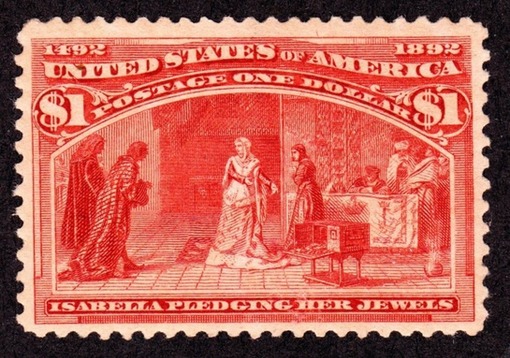Commemorative Stamps
A commemorative stamp Is a postage stamp, often issued on a significant date such as an anniversary, to honour or commemorate a person, event, piece, or object. The subject of the commemorative stamp is usually spelled out in print, unlike definitive stamps which normally depict the subject along with the denomination and country name only. Many postal services issue several commemorative stamps each year, sometimes holding first day of issued ceremonies at locations connected to the subjects. Commemorative stamps can be used alongside the ordinary stamps. Unlike definitive stamps that are often reprinted and sold over a prolonged period of time for general usage, commemorative stamps are usually printed in limited quantities and sold for a much shorter period of time, usually, until supplies run out. The sixteen stamps of the United States Columbian Issue, produced to celebrate the World Columbian Exposition in Chicago honouring Christopher Columbus’s arrival in 1492 are considered as the world’s first commemorative stamps. illustrated here is the US stamp from the series: “Isabella pledging her jewels.

Though the United Kingdom often sets the precedent tor postage stamps and their designs, they were the late runners with the issue of their first commemorative stamp, not issuing one until the British Empire Exhibition issue in 1924.Since first postage stamp of colonial Ceylon was issued in 1857, stamps have become a ceremonious element marking the milestones and identity of the country. The coronation of Queen Elizabeth II was celebrated with a stamp in 1947, followed by another to commemorate her first visit to the island in 1954, where the Queen’s full face is flanked by a ceremonial procession at elephants in Kandy. The first two stamps of independent Sri Lanka with the National Flag as well as the face of D. S. Senanayake, the first Prime Minister of the nation were issued on February 4, 1949, the first anniversary or independence. In the early years, the appearance of commemorative postage stamps caused a criticism among some stamp collectors who were hesitant to spend larger sums of money to acquire the stamps of the world. This led to the formation of a society for the Suppression of Speculative Stamps in 1895. The organization was dissolved after unsuccessful attempts at acquiring members at large to comply with their views. Today early commemorative stamps are still valued by the collectors.
Dithira De Silva


 Prefects
Prefects